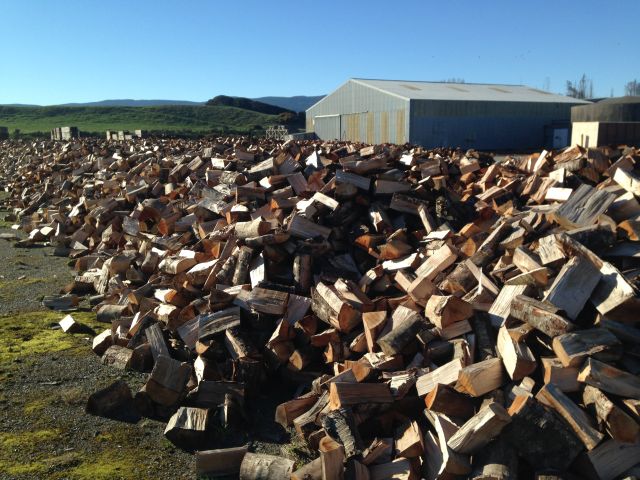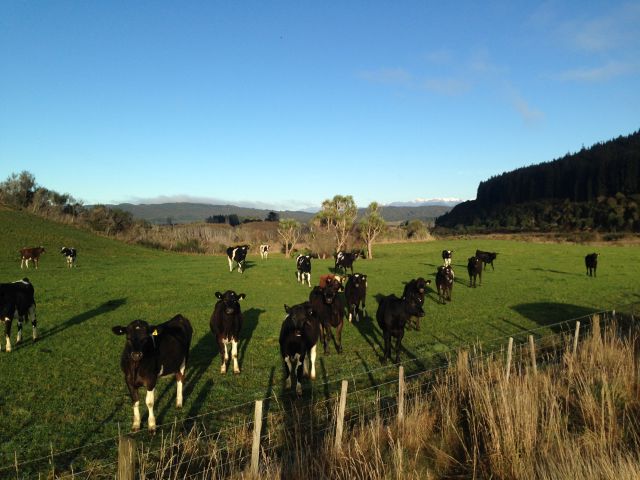 |
| Sign at the Blackmont Pool, so indicative of NZ hospitality and friendliness. |
 |
| Pearl tops off water at the Blackmont Pool. |
 |
| Sheep again. It was usually difficult to get good photos of sheep as they would typically turn around and move away, unsure of what we were about. |
 |
| Belted Galloway steers. |
 |
Elk and red deer are raised almost as commonly as beef cattle in this region.
|
 |
| A field of swedes with nearby cattle waiting to get to them. Sometimes the swedes are harvested, sliced and spread on the fields for livestock feed. |
 |
| Pearl holds a gigantic swede. |
 |
| Holstein calves hoping we'll feed them. |
 |
| Despite the increase in dairy farming, sheep remain the most popular livestock in NZ. |
 |
| Along with livestock, logging is a major industry in the NZ countryside. |
 |
| Most of the native trees in NZ are crooked and thus poor for making lumber. At this mill the short sections have been cut and split for firewood. |
 |
| Continuing south, we eventually arrive at the great Southern Ocean. Looking out past the breakers, the next land is Antarctica some 1500 miles away. |
 |
| As we headed east along the south coast, we couldn't resist checking out a place named Cozy Nook. |
 |
| First stop at Cozy Cove was the Long Drop Lodge |
 |
| The sign on the door says it all |
 |
| An old fishing boat at Cozy Nook. |
 |
| A delightfully whimsical cottage at Cozy Nook |
 |
| Riverton on the south coast is one of the oldest towns in NZ. |
 |
After Riverton, we hurried through Invercargill, the largest city on the south coast and on to Waipapa lighthouse.
Built in the 1880's following a nearby shipwreck, it's still in service.
|
 |
| Distances from Waipapa lighthouse to various points around the world. This was a souped up example of a common sight at important points in New Zealand. |
 |
| Trees tell the tale of relentless winds in what sailors know as the "Roaring Forties", a reference to the stormy weather in the latitudes between 40 and 50 degrees south. |






No comments:
Post a Comment
Note: Only a member of this blog may post a comment.